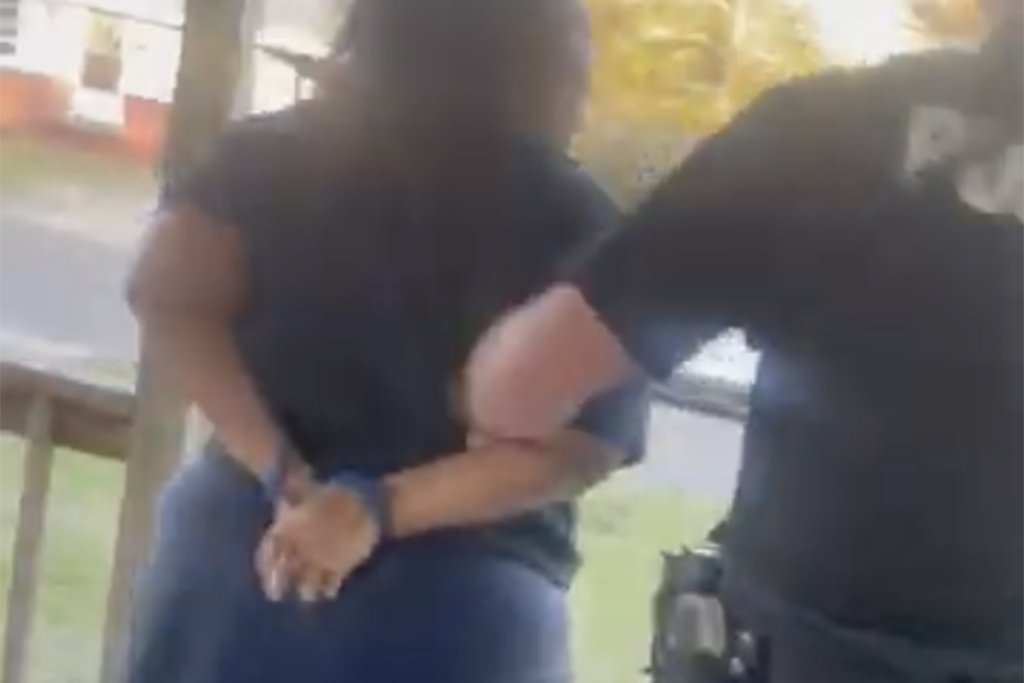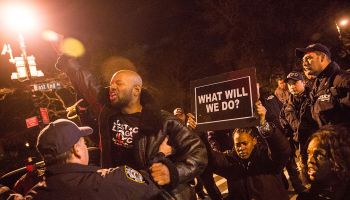COLUMBIA, Mo. (AP) — After scoring just 22 points all season in mop-up duty, Missouri freshman forward Tyler Stone has no illusions of bolting college for the NBA after a single year.
Instead, the 6-foot-7 Memphis native is a different sort of one-and-done: a college athlete leaving a school sooner than his family expected as a prized recruit takes over his scholarship.
“I can’t see how a school can love him to death one year and the next year cut him loose,” said his mother, Sharon Stone. “They had to get rid of somebody.”
The NCAA says its rules are clear. Athletic scholarships are one-year, “merit-based” awards that require both demonstrated academic performance as well as “participation expectations” on the playing field.
Click here to view photos:
RELATED: Paying College Athletes: Lawsuit Might Force Pay For Play
College sport watchdogs — and, occasionally, athletes themselves — tell a different story. They see unkept promises and bottom-line decisions at odds with the definition of student-athlete.
Those discrepancies apparently have caught the attention of the U.S. Justice Department. Its antitrust division is investigating the one-year renewable scholarship, with agents interviewing NCAA officials and member schools. A Justice Department spokeswoman declined comment because the probe, announced on May 6, is ongoing.
“This happens a lot more than anybody even believes,” said New Haven management professor Allen Sack, a former Notre Dame football player and vocal NCAA critic. “You’re allowed to do it. According to the NCAA, there’s nothing wrong with it.
“Coaches don’t go out of their way to clarify (scholarship length). They make it as vague as they possibly can.”
At Missouri, the school announced on April 12 that Stone and sophomore guard Miguel Paul were transferring to seek more playing time. Two days later, the Tigers signed a pair of the country’s top-rated junior college transfers, rugged 6-foot-8 forward Ricardo Ratliffe and guard Matt Pressey, whose younger brother Phil will also join Missouri as a freshman in the fall.
Missouri coach Mike Anderson called the timing of the two announcements coincidental. Both Stone and Paul had previously expressed interest in seeking a fresh start, he said, calling their decisions to leave “mutual.”
“I don’t have a lot of guys go in and out of my program,” he said. “My kids are like my family, and I want my family to be happy. If you’re not happy, then maybe this is not the right place.”
RELATED: BOYCE: The NCAA Billion Dollar Sweatshop
Paul told The Associated Press that “the coaches wanted me to stay but I told them this wasn’t the place for me.” He is transferring to East Carolina.
Stone, meanwhile, will play for mid-major Southeast Missouri of the Ohio Valley Conference after sitting out the required year for Division I transfers. He declined an interview request, but his mother spoke with the AP at length in several interviews and made it clear that her son was pushed out.
She described a celebratory spring break barbecue touting her son’s first year in college. Her son went back to campus afterward and, hours later, called with unexpected news. “He came back (to Columbia) Monday and said, ‘I have to transfer,'” she recalled. “I thought he was going to graduate from that school.”
Exactly how often athletic scholarships are revoked to make room for better players is hard to quantify, though a pair of recent studies on turnover in college basketball offer a few clues.
The National College Players Association, an advocacy group that lobbies for athletes’ rights, found an average roster turnover rate of 22 percent among the 65 schools in the 2009 NCAA tournament. That works out to 169 players out of 775 possible returners.
The group includes players who lost scholarships for academic reasons or who sought transfers, but excludes graduating seniors and those who left for the NBA.
The University of North Carolina‘s College Sport Research Institute found that 11 of 95 Division I schools studied had at least 20 percent roster turnover for the 2009-10 season. The UNC study also excluded injured players as well as those who turned pro or graduated.
Both studies include Kentucky, where seven players on Billy Gillespie’s final squad didn’t return once John Calipari took over in 2009 and brought his own recruits. Four of those former Wildcats have said publicly they were asked to leave the program.
Kentucky athletic director Mitch Barnhart said that Calipari was honest with the team he inherited.
RELATED: College Basketball Player Collapses & Dies During Game
Players were told up front whether or not they fit into Kentucky’s plans. Either “we have a spot for you or we can help you go someplace else,” Barnhart said.
Advocates for athletes say players who leave against their will often stay quiet, so they can save face by requesting a transfer and getting a recommendation from their now-former coach that will help them jump more easily to a new school.
The one-year renewable scholarship, with a limit of five years of athletic aid, has been in place since 1973. Kevin Lennon, the NCAA’s vice president for academic and membership affairs, said the 37-year-old policy has not been a frequent topic of concern among member schools. He noted that NCAA rules require colleges to provide athletes who lose scholarships with an appeals option, typically consisting of a campus panel formed from outside the athletics department. But such arbitration is not common, he acknowledged.
Requiring Division I transfers to sit out a year before competing for a new school prevents coaches from recruiting players away from other schools, said Maryland basketball coach Gary Williams.
Coaches who routinely “run off” players risk sullying their reputation — and losing recruits to other coaches who would point out that track record, he added.
“I don’t know many coaches who do that,” Williams said. “If you develop a reputation for doing that, you probably won’t be coaching very long.”
In football, former Colorado State kicker Durrell Chamarro expected to stay at the school that recruited him for his entire college career. After a redshirt freshman year and another season as a backup, he hoped to emerge as a starter by his senior year.
Instead, former Rams coach Sonny Lubick told Chamorro in the spring of 2007 that his scholarship had been revoked. Chamorro was invited to remain with the team as a walk-on, but the only child of a retired southern California school teacher and a waitress couldn’t afford out-of-state tuition of more than $17,000 a year.
RELATED: More African-Americans Attend College, But Graduation Lags
“I was told that as long as I maintained at least a 2.0 GPA and didn’t break any rules, I would have my scholarship for four or five years,” said Chamorro, who was also offered scholarships by Arizona State, Oregon State and Washington out of high school.
Lubick retired in 2007 and now works in community outreach at Colorado State’s business school. He recalled that Chamorro was put on notice after his first year on scholarship that “you’ve got to be better. We’ll give you one more year.”
The retired coach added that NCAA rules allow schools to sign up to 25 scholarship athletes each year but with a roster limit of 85 players — a system that assumes some students won’t have their aid offers extended.
Chamorro, who had a 3.4 grade-point average at Colorado State eventually transferred to Cal Poly Pomona — but not before borrowing roughly $10,000 in student loans, changing his major because his new school wouldn’t accept all of his transfer credits and taking a detour through junior college.
“They say whatever they think they need to get you to come to their school,” he said. “But when you get there, they can do whatever they want.”
















